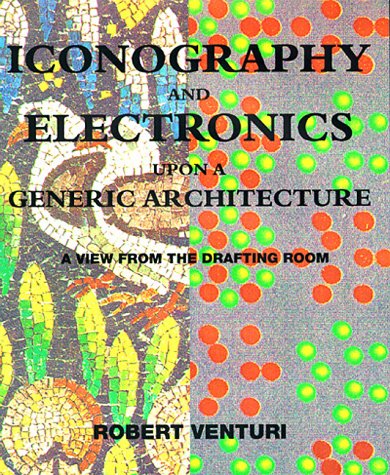Iconography and Electronics Upon A Generic Architecture
1 total work
Robert Venturi is the author of "Complexity and Contradiction in Architecture" and "Learning from Las Vegas" (the latter co-authored with Denise Scott Brown and Steven Izenour) - the one celebrating complexity in architecture, the other the uses of symbolism in commercial and vernacular architecture and signage. This collection of writings in a variety of genres argues for a generic architecture defined by iconography and electronics, an architecture whose elemental qualities become shelter and symbol. Venturi, who along with his partner, Denise Scott Brown, made the vulgar acceptable and found virtue in the commercial, the kitsch and the ordinary, is considered equally as a theorist and an architect who communicates his architectural ideas, formal and verbal. These essays, letters, reports, lectures, manifestoes and polemical texts offer a view from the drafting room - commonsense responses, urgent and diverse, in part a reaction against the conceptualizing of architecture today invaded by other disciplines and made obscure. Seven of the essays were co-authored with Denise Scott Brown.
The voice is personal - expounding on the unglamorous side of practice; sometimes vituperative and corrective in addressing clients, theoreticians and critics; often humourous in looking back on past projects and opportunities; instructive in describing early influences and tastes; and reflective in assessing his own impact on the profession. The lead essays can be described as an argument embracing reference and representation in our information age, whose technical basis is truly of our time and whose iconographic basis derives from a long tradition in architecture including hieroglyphic Egyptian pylons, early Christian basilicas, scenographic Baroque interiors, and even eclectic Romantic architecture and 20th-century commercial billboards. The essays include Venturi's 1950 MFA thesis.
The voice is personal - expounding on the unglamorous side of practice; sometimes vituperative and corrective in addressing clients, theoreticians and critics; often humourous in looking back on past projects and opportunities; instructive in describing early influences and tastes; and reflective in assessing his own impact on the profession. The lead essays can be described as an argument embracing reference and representation in our information age, whose technical basis is truly of our time and whose iconographic basis derives from a long tradition in architecture including hieroglyphic Egyptian pylons, early Christian basilicas, scenographic Baroque interiors, and even eclectic Romantic architecture and 20th-century commercial billboards. The essays include Venturi's 1950 MFA thesis.
